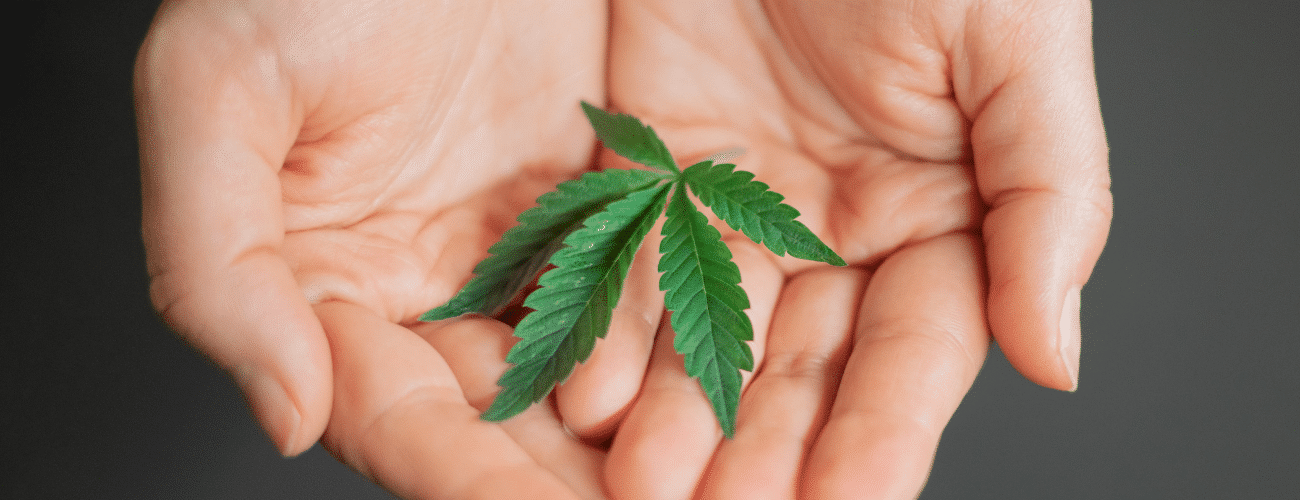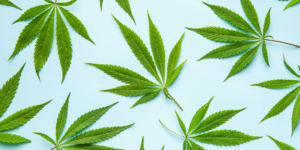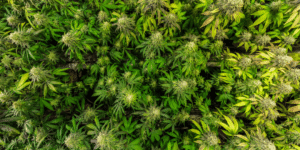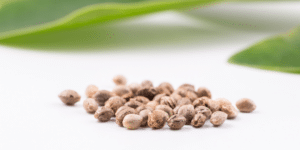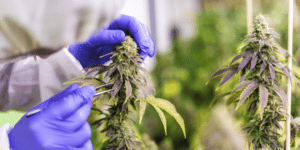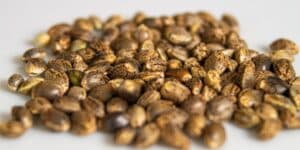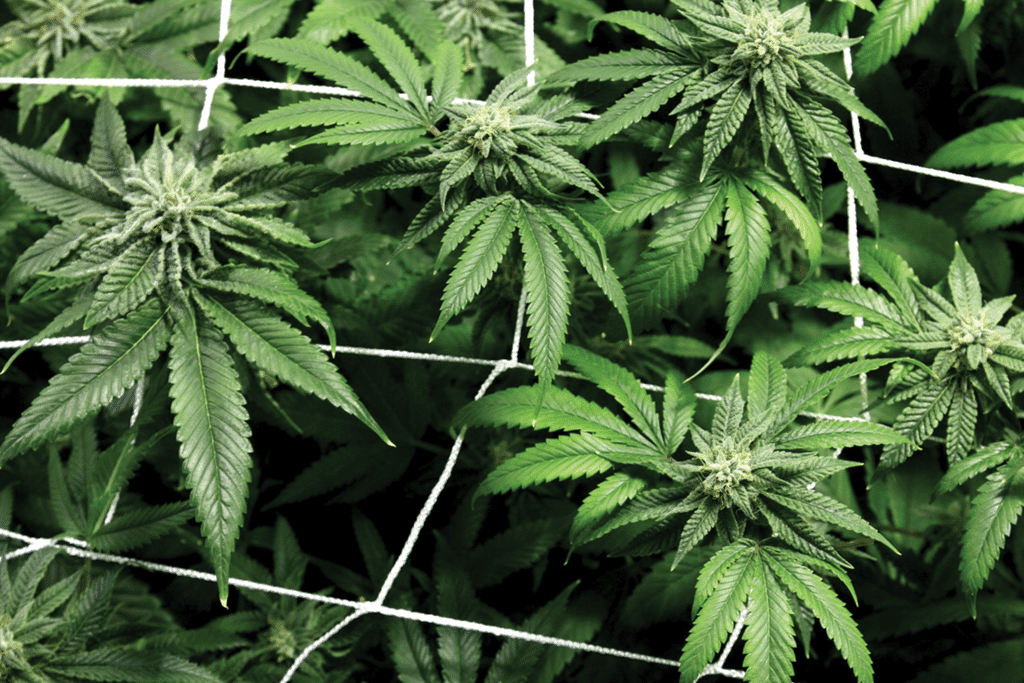Cultivation
Deficiencies Guide [Leaves, Nutrients & Charts Explained]!
When it comes to growing cannabis— or anything, really— everyone is always on the hunt for that one big secret to success. Although we hate to disappoint you, the truth is that there isn’t just one secret— but rather a set of principles that, if followed, can help you grow beautiful, healthy cannabis plants.
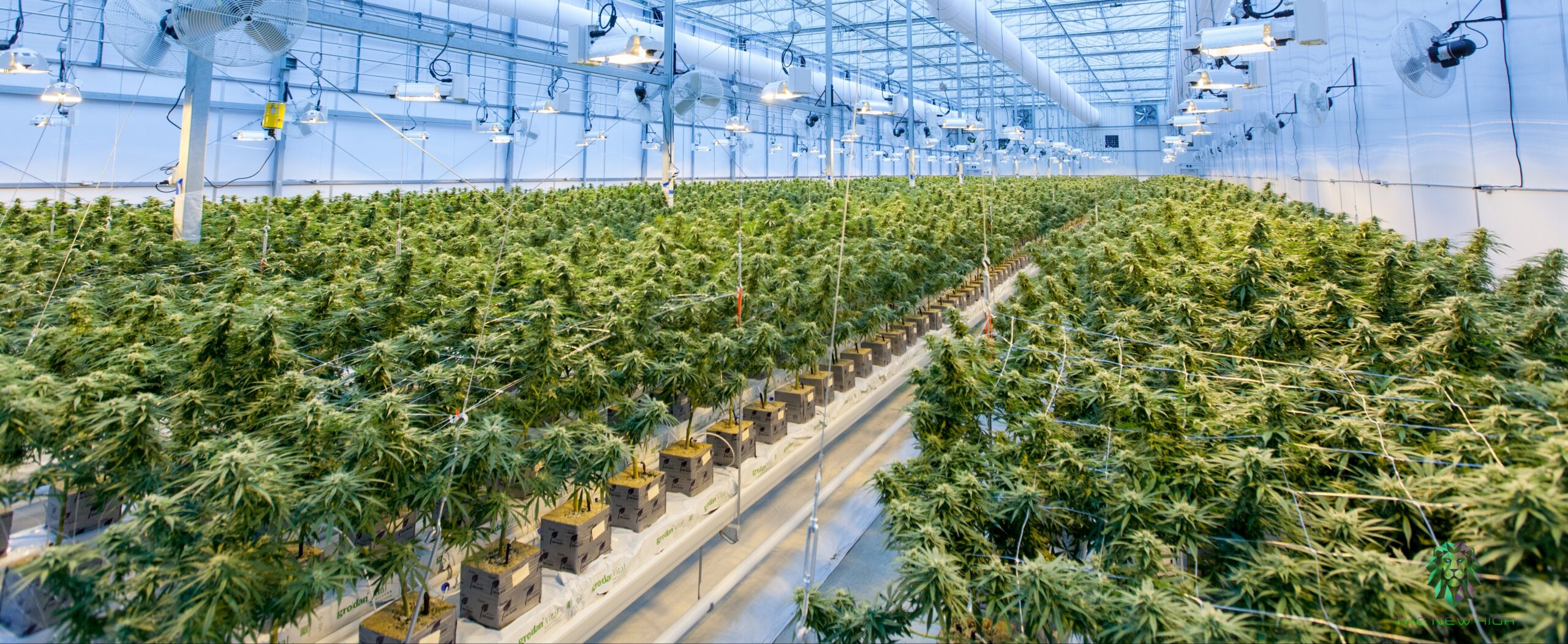
To start, you need to keep in mind that cannabis plants are very particular about their environment. To successfully grow a cannabis plant, you need to understand the ideal temperature, humidity levels, amount of light, and nutrient-rich diet your plant needs to thrive.
Just like humans, plants need certain things to survive and thrive. If something is missing from your cannabis plant’s environment, these deficiencies will be reflected in the way it grows. Prolonged deficiencies can even cause stress in your plant (yup, plants get stressed, too). This stress will make it more susceptible to several growth-inhibiting factors like bugs and pests, mold, diseases, and tricky issues.
Once you learn to spot the signs and symptoms of various deficiencies, you’ll be able to remedy the situation and improve your plant’s health. Read on to learn more about common nutrient deficiencies, tips to correct existing deficiencies, and how to prevent them in the first place.
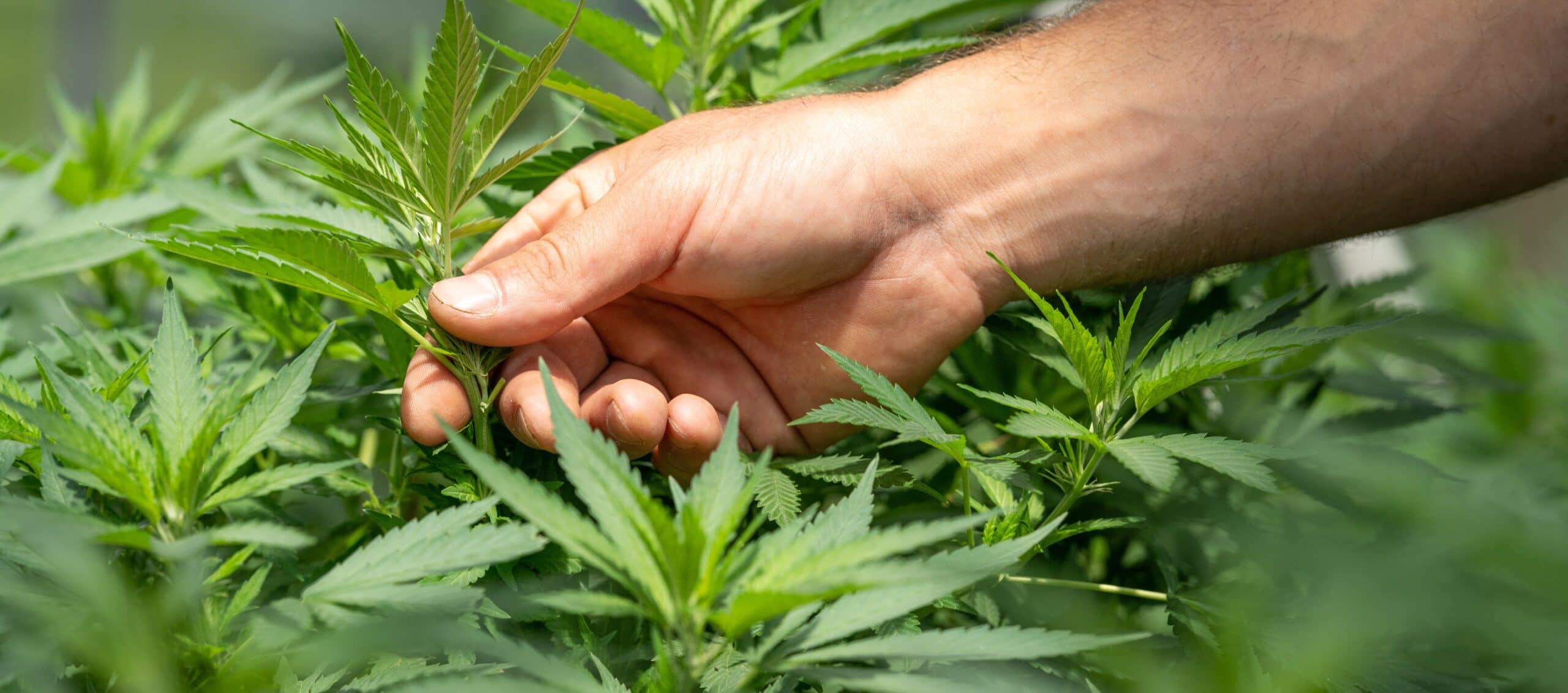
Contents
What are cannabis deficiencies?
Have you ever heard of humans having a vitamin or mineral deficiency? Well, it turns out your plants can suffer from the same thing. All living creatures require a set of nutrients that they need to function and grow the way they’re supposed to, and when something is missing, it can have a drastic effect.
When it comes to cannabis plants, these deficiencies can manifest in reduced level of THC and quantity of the cannabinoid/terpene yields. In some cases, it can even kill your cannabis plant if you don’t address the issue in time.
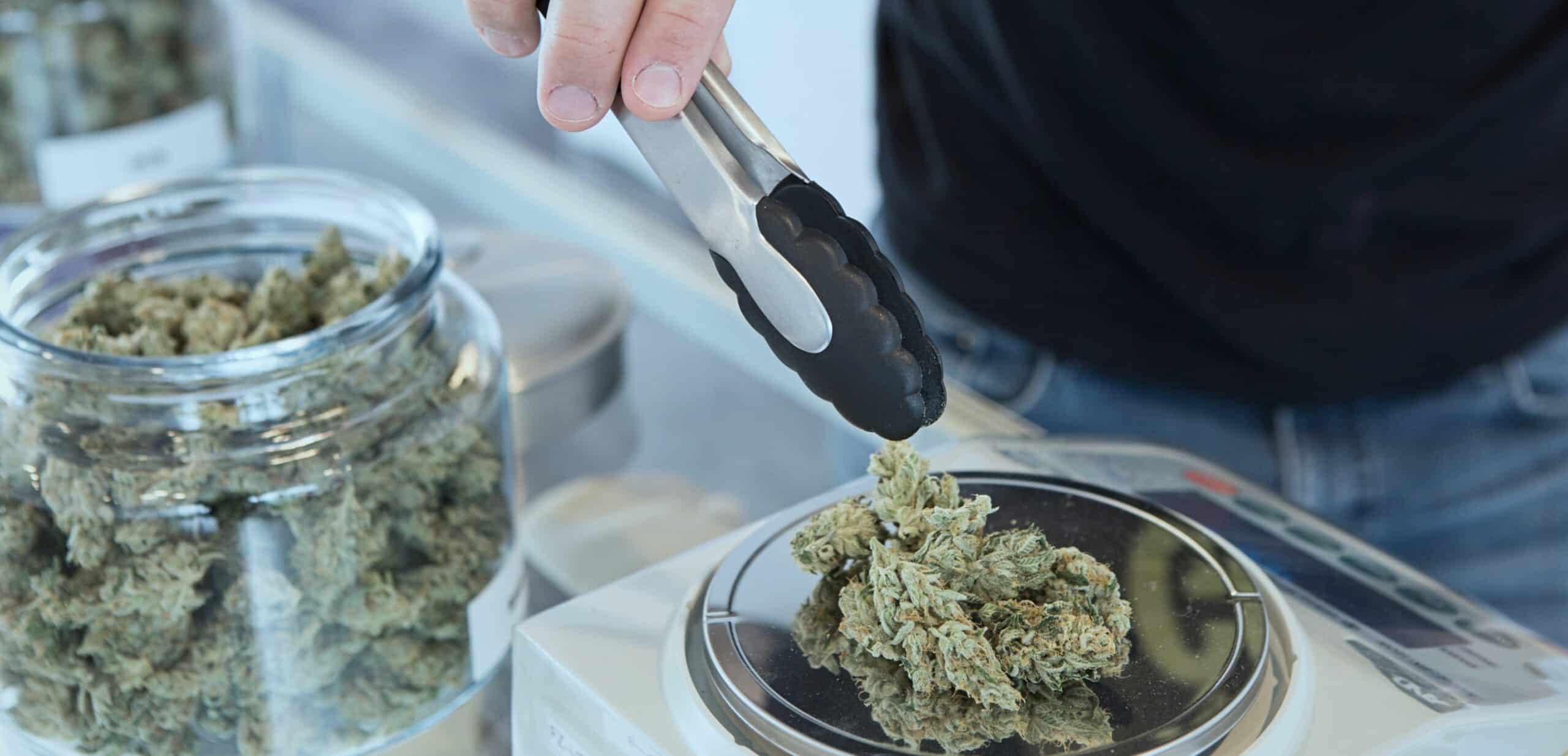
This information can feel a bit overwhelming the first time you learn it, but don’t be discouraged! The good news is that even though there are many things (or lack of things, to be precise), that can cause deficiencies, each type of deficiency has pretty specific symptoms that you can identify if you know what to look for.
These symptoms and signs can manifest in changes to the leaves, the overall appearance of the plant, and a few other visual signals that we’ll outline below.
Ph levels & cannabis nutrients chart
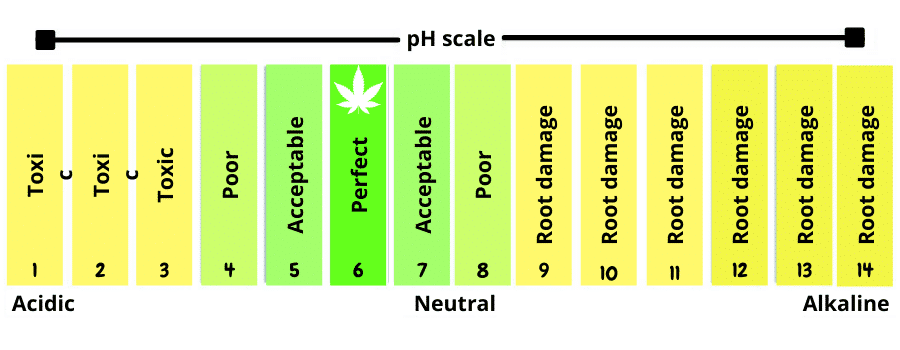
PH levels for cannabis
Unfortunately, ensuring that your plant gets all the nutrients it needs isn’t just down to the feed you give it. You could have the most perfectly balanced, nutrient-rich food globally, but your plant could still have nutrient deficiencies. Talk about frustrating! The reason that this occurs is that the food is only part of the picture. The other thing to consider is how your plant can absorb the nutrients you’re trying to give it. To the surprise of many, nutrient absorption depends mainly on the soil’s pH level. For your cannabis plant to absorb those nutrients, the soil pH levels must fall within a given range. Soil that is too alkaline or acidic will block your plant’s roots from absorbing any nutrients.
Given that soil pH is like a nutrient gatekeeper for your cannabis plants, you should always check the pH levels before investigating other nutrient deficiencies. Even if your plant is deficient in a given nutrient, it may just be because you need to adjust the pH levels of your soil.
Ideally, the pH levels of your soil or another growing medium should fall between 5.8-and 6.8. The ideal value is right around 6.3, but if your pH falls between that range, it should be acceptable and likely isn’t preventing your roots from absorbing nutrients. Typically, the pH of your soil (or alternative) should self-regulate to fall at the correct pH, but some factors like water pH could influence it to fall outside of the desired range.
Water caused deficiencies
One of the many nutrients for your plants is the water you use to hydrate them. If you’re using rainwater, sink water, or the like, it’s possible that your water is high in some minerals but low in others. Given that many cannabis growers use specific plant food to monitor and control the nutrient levels of their plants, the additional minerals from your water source could go overlooked. This can cause an imbalance that may result in a deficiency or resemble one.
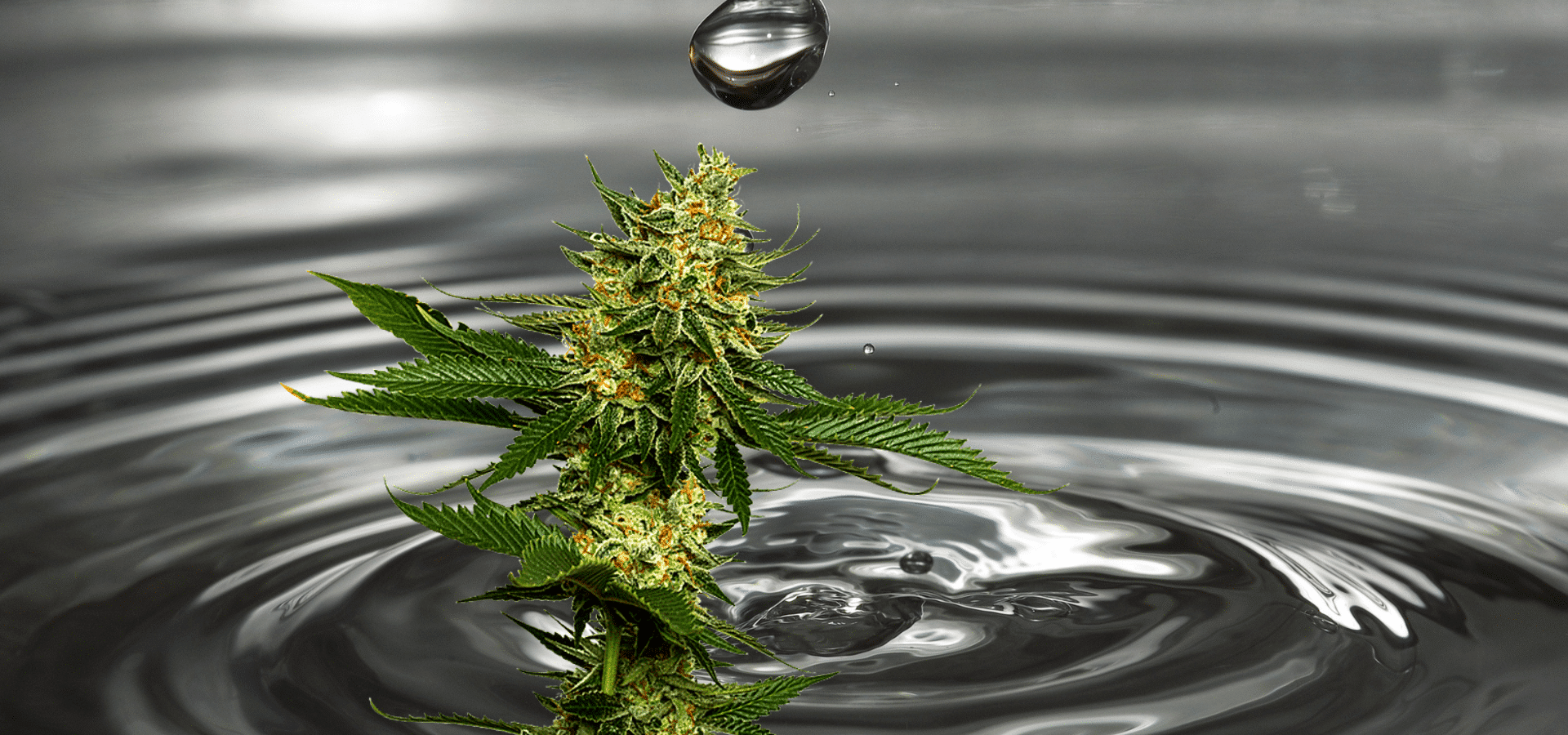
One of the best tips to avoid this outcome is to rigidly control the water that you use for your cannabis plants. It’s pretty famous for growers exclusively using deionized water (water that has had all ions removed). Deionized water is entirely free of water-based minerals that might interfere with the delicate nutrient balance your cannabis plant needs to survive. This step isn’t strictly necessary, but if your local water source is very mineral-rich, it may be good to switch to deionized water instead.
Macronutrients & micronutrients deficiencies
Macronutrients are nutrients that your cannabis plant needs to receive in large quantities. In the same way, humans need fat, carbs, and protein; plants need Nitrogen, Phosphorus, and Potassium, to name a few. These macronutrients are necessary for the healthy growth of the plant, and they feel the majority of the core biochemical processes that occur during development and bloom.
Micronutrients are needed in much smaller quantities— but are needed all the same. These nutrients, including silicon, Zinc, Copper, and Sulphur, help with the plant’s cellular biological function.
Mobile nutrients vs. immobile nutrients
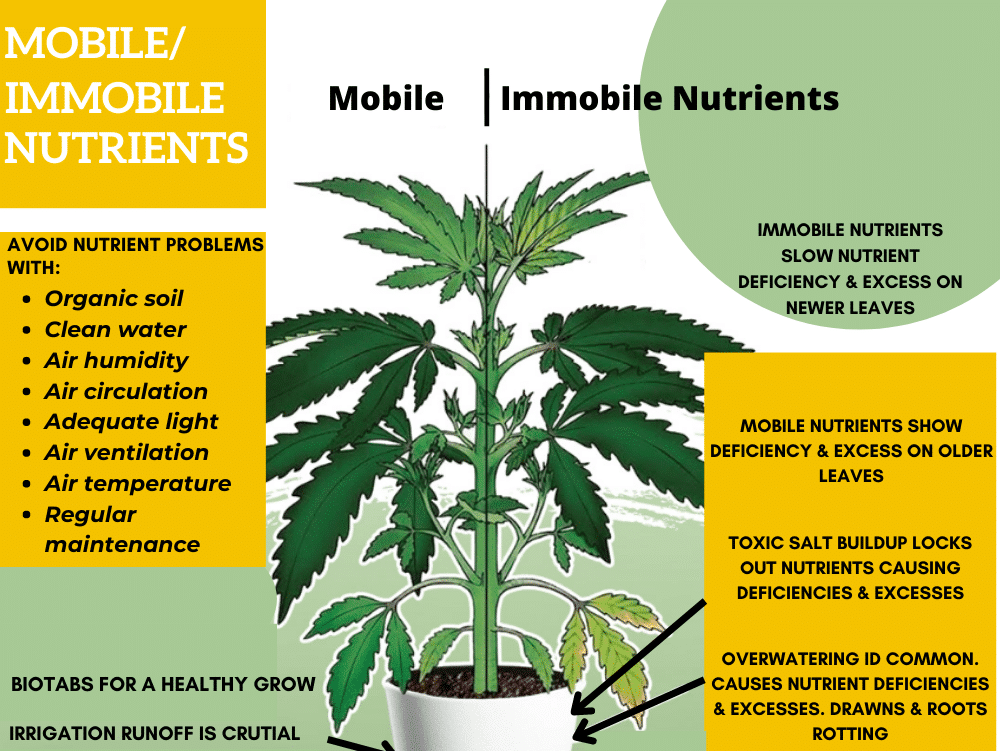
In addition to macro and micronutrients, your cannabis plant also has (and needs) two other types of nutrients: mobile and immobile.
As the names suggest, mobile nutrients can move throughout the plant if necessary. On the other hand, immobile nutrients are not able to move once the plant has deposited them.
When you’re facing a mobile nutrient deficiency, you will be able to spot it most easily in the old-growth of the plant. This is because the plant will prioritize the new growth and, if faced with a deficiency of a mobile nutrient, will siphon the nutrient out of an older part of the plant and into the more recent piece. Common examples of mobile nutrients are Magnesium, Phosphorous, Nitrogen, Potassium, and Nickel.
Immobile nutrient deficiencies present the opposite problem. These nutrients are tethered to certain parts of the plant, so if a nutrient deficiency occurs during new growth, that’s where you’ll notice the symptoms of an immobile nutrient deficiency (but the old-growth will look just fine). Common immobile nutrients are Manganese, Zinc, Sulfur, Boron, Calcium, Iron, Copper, and Molybdenum.
Over feeding & nutrient deficiency chart

Anyone who has ever faced any problem will tell you: it is far easier to prevent a problem than to repair the damage after the fact. Sometimes this is easier said than done, however, so you must understand the signs and symptoms of each nutrient deficiency. Otherwise, you may accidentally exacerbate the problem you’re trying to fix.
We emphasize that you need to learn the ins and outs of the deficiencies because the symptoms of various cannabis deficiencies are pretty similar. To the untrained eye, it can be nearly impossible to discern the difference between a Manganese deficiency and a Zinc deficiency (both cause lightening of the leaves). Still, the treatment for each is quite different.
To combat deficiencies in a general sense, many professional growers will opt for what we sometimes call the “small fish in a big pond” solution. This method involves using larger pots of nutrient-rich soil for each plant. The cannabis plant has a much larger nutrient reserve to draw from.

Be warned, though, that this method has its drawbacks as well. Chief among them is the potential for your plant to experience a nutrient excess. Yes— not only do you need to look out for nutrient deficiencies, but you also need to look out for nutrient excesses. Check out the handy graphic for more info on how the various nutrient deficiencies or excesses can present themselves.
Additionally, it’s also possible for your cannabis plant to simultaneously suffer from multiple nutrient deficiencies. If you’re using good, professionally prepared soil, you notice symptoms of various shortcomings. However, it’s likely a sign that your soil pH is out of whack, causing nutrient lockout in your plant’s roots.
Nutrient deficiencies – how to diagnose & treat them?
If you suspect you may have a nutrient deficiency problem with your cannabis plant, the best thing to do is act as quickly as possible. Catching it early can make a world of difference. Still, before you begin trying to solve the problem, you must be able to identify what the problem is correct. The minute you notice any sign or symptom that something isn’t right with your plant, you should be donning your Sherlock Holmes hat and solving the mystery of what exactly is amiss. Keep in mind that the longer you wait, the more seriously the issue will impact your yield and harvest. Always aim to keep your plants in perfect or near-perfect health because an unhealthy plant will succumb to problems far more quickly than a healthy plant.
Here are some of the most common nutrient deficiencies, their identifying symptoms, treatment methods, and how to prevent them.
Nitrogen deficiency in cannabis

Nitrogen is a mobile macronutrient. Nitrogen is crucial to photosynthesis, and without Nitrogen, a plant cannot grow properly.
Symptoms
Nitrogen deficiencies can be identified in a few key ways. Some telltale signs of a Nitrogen deficiency in your cannabis plant are pale or yellowing leaves and leaves that have begun to curl in on themselves and, eventually, fall off. As is typical with micronutrient deficiencies, these symptoms will initially show themselves in the leaves near the bottom of the plants. It is also possible for leaves to begin browning. Another common symptom is faster blooming with fewer bud points and lower yields.
Treatment
First, check to ensure your pH levels are in the ideal range. If they are, you can add some standard nutrients to the soil. Alternatively, you can use a light foliar feed spray filled with a nutrient-rich solution. Fish-based nutrients (and fish-based foliar sprays) are typically high in Nitrogen.
Prevention
Prevent Nitrogen deficiency by monitoring pH levels and planting your cannabis in a nutrient-dense potting mix.
Phosphorous deficiency in cannabis
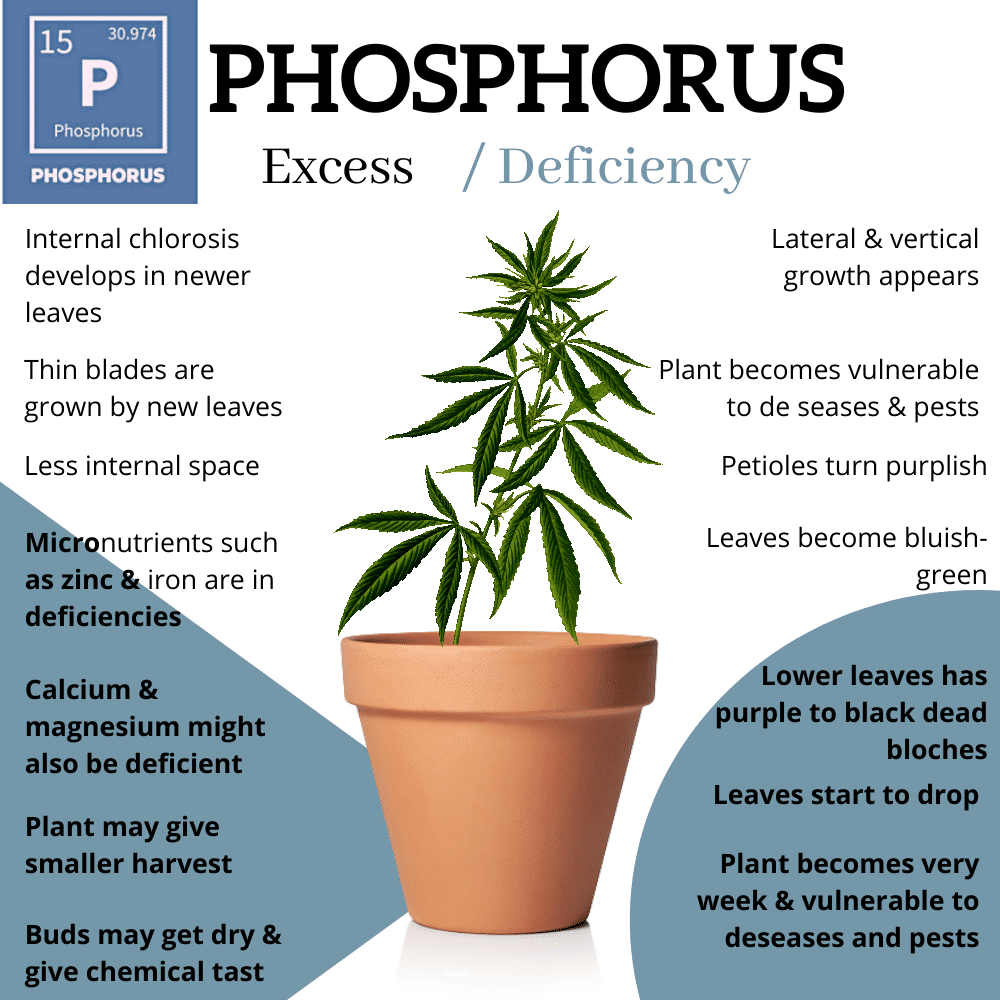
Phosphorous is another mobile macronutrient that helps your cannabis plant grow and stay healthy. Your cannabis plant depends on Phosphorous to form plant proteins and plant DNA, and, like Nitrogen, it is essential to the process of photosynthesis.
Symptoms
You can spot a Phosphorous deficiency by brown discoloration on the leaves or the appearance of red or purple dead spots on the stems of your leaves. Additionally (or) you may notice that the entire leaf seems to have taken on a darker hue, appearing dark blue or dark green. This nutrient deficiency can also cause leaves to curl and fall, and, like with Nitrogen, you will first notice these symptoms at the bottom of the plant.
Treatment
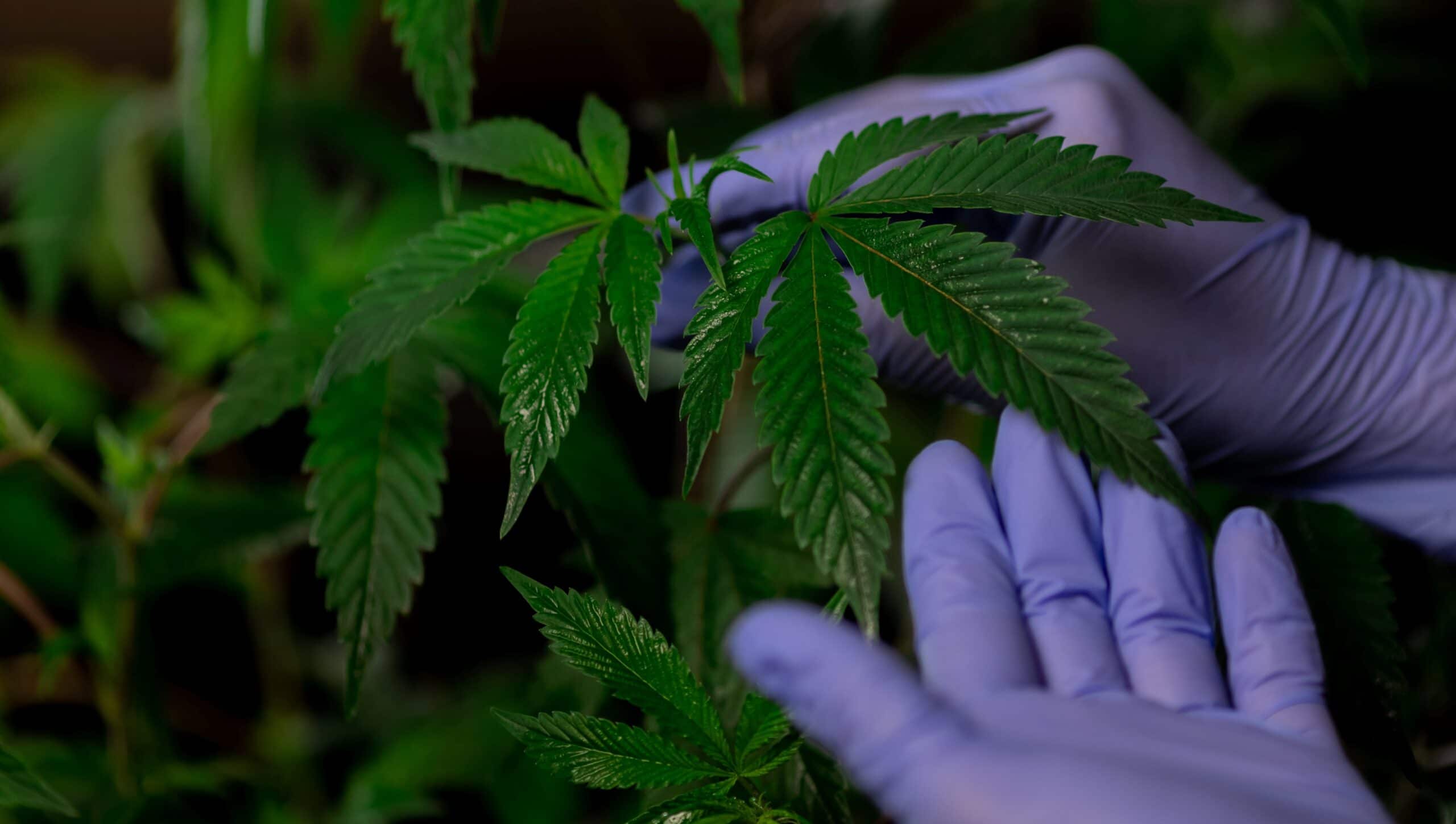
After ensuring your pH is normal, try adding a feed or fertilizer rich in Phosphorous. For an organic alternative, try using fish or mealworm casings instead. Keeping temperatures in the ideal range is also essential, as colder temperatures can make Phosphorous absorption difficult. Additionally, be sure not to overwater, as this can dilute or disperse the nutrients before they’re absorbed (and can drown your plant!).
Prevention
Start with soil rich in Phosphorous from the get-go, and make sure they grow container is well aerated and that you use good fertilizer to promote soil health from the start.
Potassium deficiency in cannabis
Another mobile macronutrient, Potassium, is one of the essential nutrients for the health of your cannabis plant. In the growth cycle, Potassium is crucial to the development and transportation of simple carbohydrates and sugars and the water intake, cell division, and root growth.
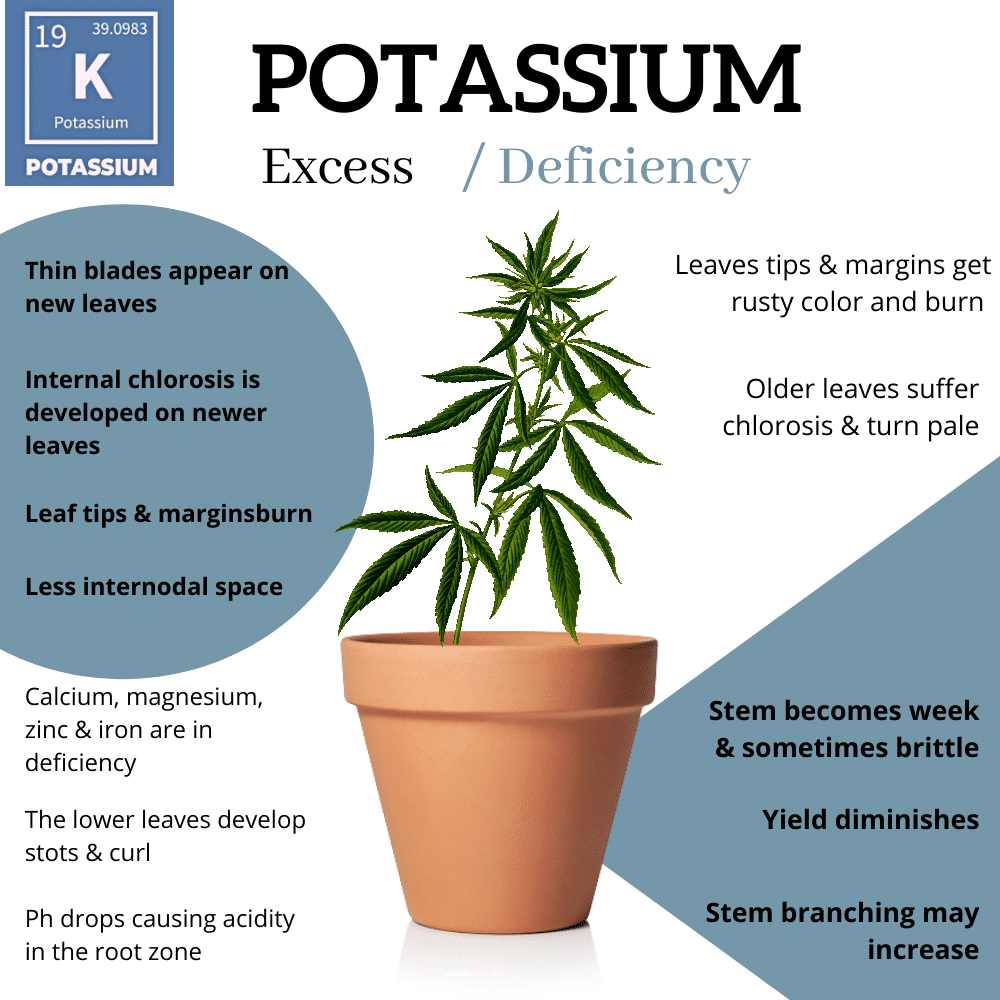 Symptoms
Symptoms
You can spot a Potassium deficiency by the brown or yellow-tipped leaves, curling of the plant’s leaves, and overall stretching of the plant (which will be more than usual).
Treatment
Adding chicken manure to the top level of your soil or alternative medium can help, or for an inorganic alternative, you can try a Potassium-rich nutrient feed.
Prevention
Overfeeding your plant can create salt build-up and interfere with potassium intake. As a result, you should carefully measure the amount of fertilizer you use— more is not necessarily better. Also, be sure you don’t overwater your plants.
Magnesium deficiency in cannabis

Unlike the others, Magnesium is an immobile micronutrient, which means that its deficiency symptoms will first appear at the top of the plant rather than the bottom. This nutrient helps photosynthesis occur, and without it, photosynthesis isn’t possible.
Symptoms
Magnesium deficiencies are first noticeable in the new leaf growth of the plant. At first, leaves will show yellow spots that ultimately turn brown and lead to the death of the affected leaf. On older leaves, the areas between the veins will turn yellow or may show rust-colored spots throughout.
Treatment
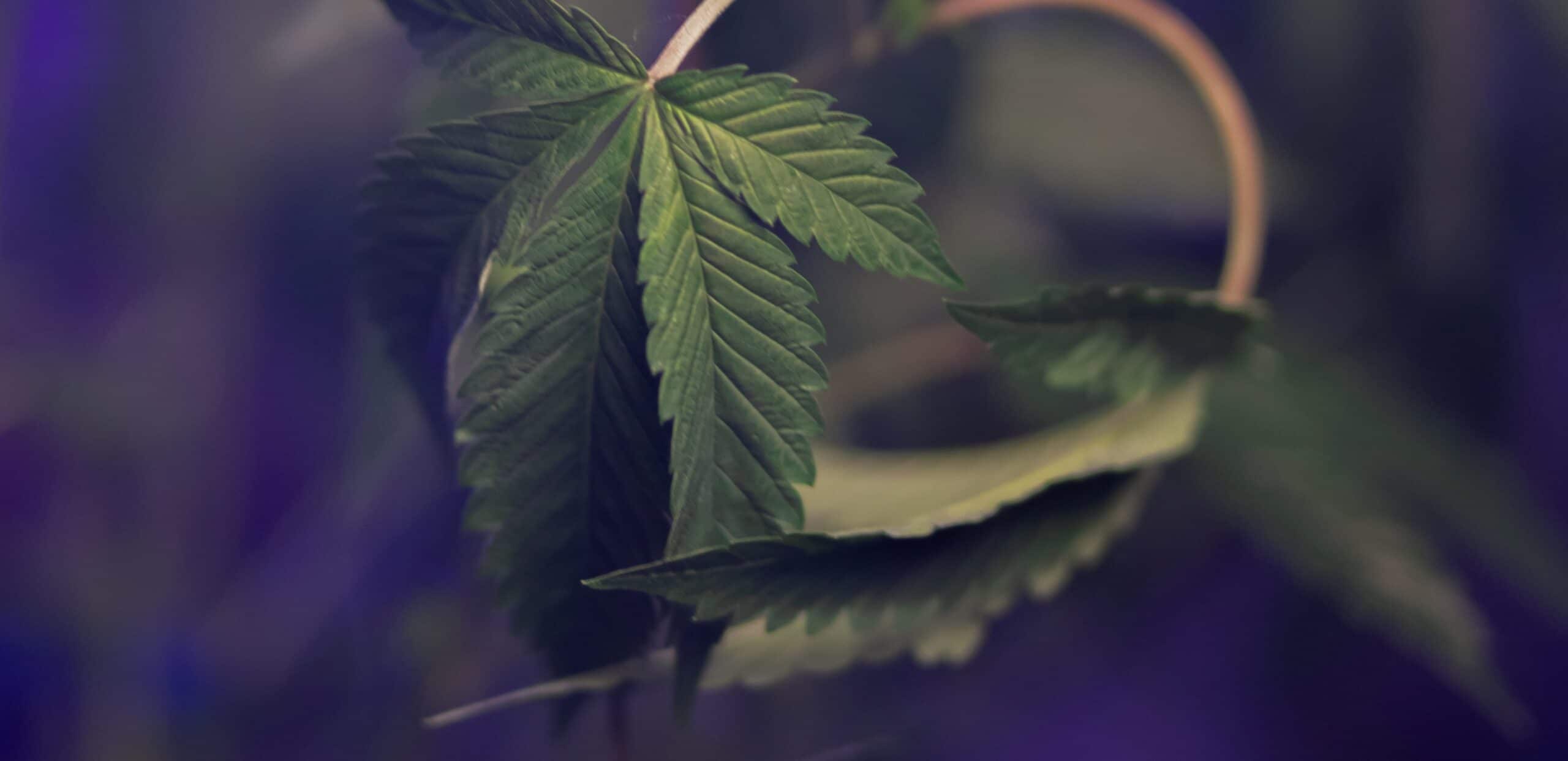
After checking that your pH levels are alright, you can add a teaspoon of Epsom salt to four liters of water and then apply it to your plant until the symptoms resolve themselves.
Prevention
To prevent a Magnesium deficiency, try treating your soil or growth medium with dolomitic limestone. You can also use manure-rich compost. As always, be sure to monitor your pH levels as well.
Calcium deficiency in cannabis
Calcium is another immobile micronutrient that helps the plant form its structure and fortify its cells.

Symptoms
The first place that you’ll notice a calcium deficiency is in the new leaves of your cannabis plant. Look for small brown spots, stunted or irregular growth (resulting in deformed leaves), leaves curling at the tips, or crinkling of the leaves.
Treatment
Try using a nutrient supplement rich in Calcium to solve the problem quickly. You can also try to fix the pH of your soil so that it sits as close to 6.2 as possible. Additionally, try adding one teaspoon of hydrated lime to four liters of water and treat your cannabis plants with the solution until the issue resolves itself.

Prevention
Another problem can be prevented by supplementing your soil with dolomitic lime or garden lime. If using organic compost, try adding eggshells to the compost mixture.
Boron deficiency in cannabis
Boron is an immobile micronutrient that works with Calcium to keep cell walls healthy and aid in healthy cell division. Because this nutrient is a micronutrient, cannabis plants don’t need much of it, and as a result, a Boron deficiency Is not the most common.
Symptoms
A Boron deficiency in your cannabis plant will present as a wilting plant with poor vegetative growth. New growth will likely appear twisted or distorted, and leaves will take on a brown or yellow discoloration.
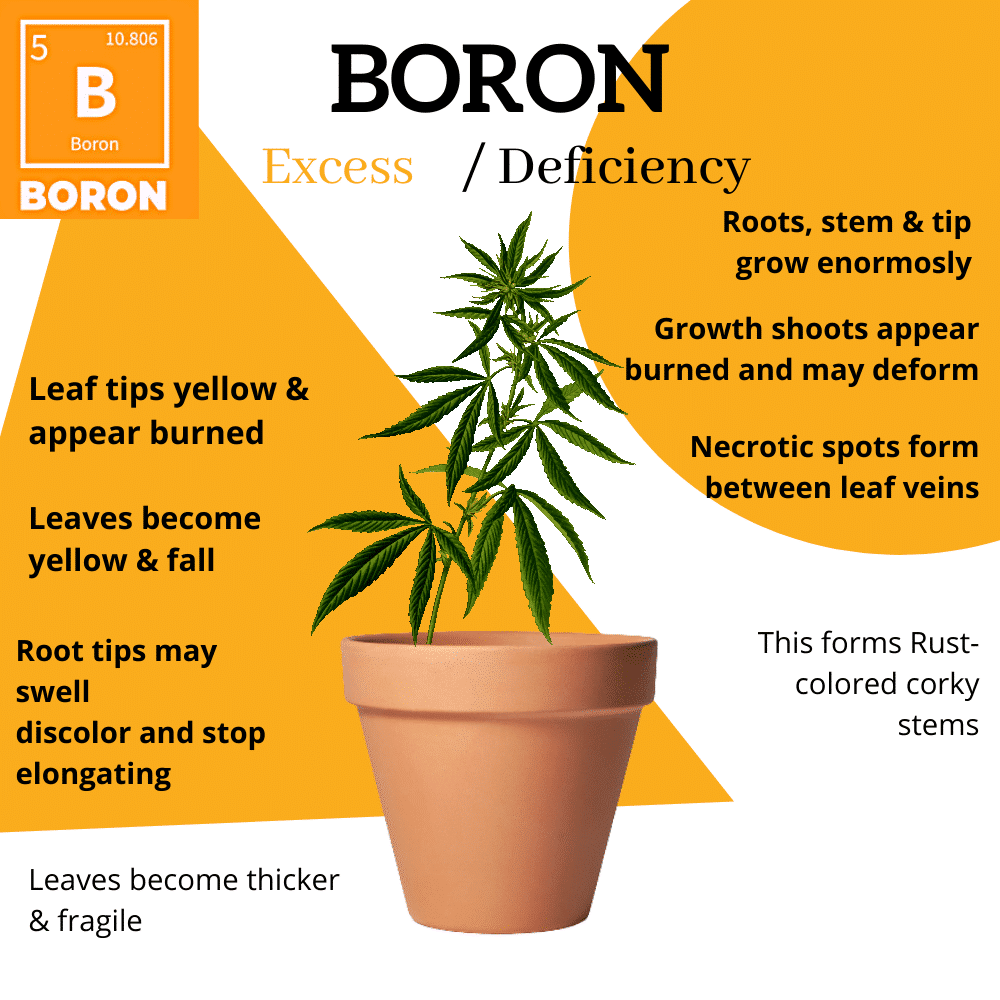
Treatment
If your pH levels are in the ideal range, you can treat a Boron deficiency by adding one teaspoon of boric acid to four liters of water and applying it to your affected plants.
Prevention
Prevent a Boron deficiency by keeping plants hydrated and avoiding overfeeding, as these can cause a nutrient lockout. Humidity levels where you keep your cannabis plants should also remain above 25%, and the soil you use needs to be well-aerated and well-draining.
Copper deficiency in cannabis

Copper is classified as a semi-mobile micronutrient that helps the plant absorb and use Nitrogen. Copper is also responsible for assisting with the plant’s ability to metabolize carbohydrates. This deficiency is very uncommon given that Copper is a micronutrient and is only needed in tiny amounts.
Symptoms
If your cannabis plant is suffering from a Copper deficiency, it will slowly start to wilt and may present with twisting new growth. The leaves may also develop dark blue or purple undertones and tips that appear light yellow or white. Copper deficient leaves can feel stiff to the touch, and you may notice that buds either do not ripen or grow incredibly slowly.
Treatment
The most common cause of a Copper deficiency is an imbalanced soil pH. You can adjust the pH to the correct range if you notice this deficiency. Also, try to avoid overwatering.
Prevention
Ensure you aren’t overwatering your plant and monitoring the pH levels to ensure they stay in the ideal range.
Iron deficiency in cannabis
Iron— an immobile micronutrient— is essential to a plant’s energy forming processes. Additionally, iron is vital to developing chlorophyll, multiple enzymes, and integral pigments.
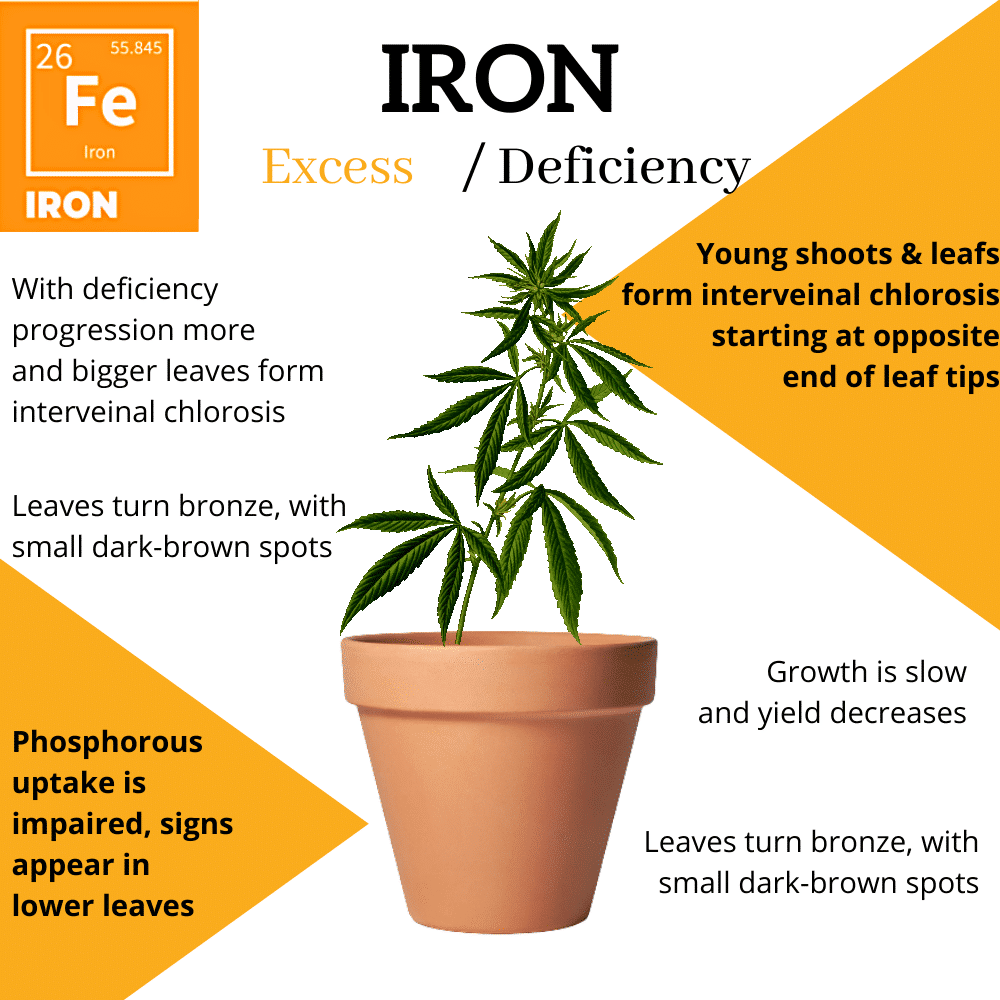
Symptoms
As an immobile nutrient, the symptoms of an iron deficiency will first appear at the top of the plant in the new leaf growth. You may notice some discoloration between the veins of the leaves, as well as the leaves at the top of the plant turning bright yellow.
Treatment
If your soil pH is at the ideal level, you can try flushing the growth medium and then adding an extra iron supplement after that’s finished. You can also use a small amount of nitrogen-rich fertilizer, which will help lower the soil pH and make the iron more accessible to the plant.
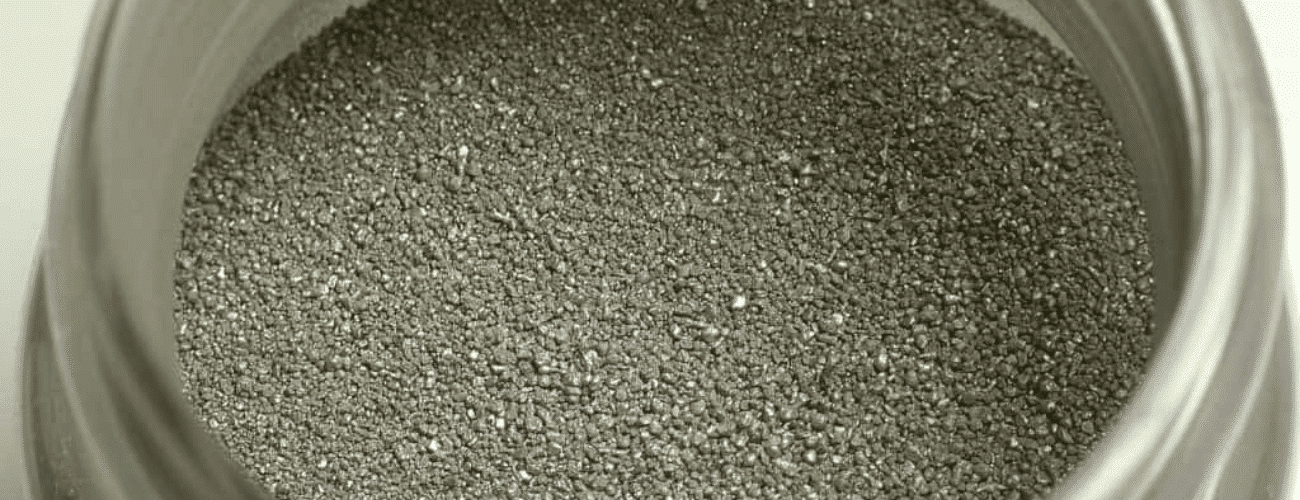
Prevention
Prevent iron deficiency by adding mycorrhizae to the soil, monitoring your pH levels, and adding chicken manure, seaweed, and kitchen scraps to your compost.
Manganese deficiency in cannabis
Manganese is another immobile micronutrient that is fundamental to the physiology of cannabis plants. This micronutrient plays a big part in respiration, nitrogen assimilation, photosynthesis, and root cell elongation. On top of all of that, it even protects the plant’s roots from harmful microbes!
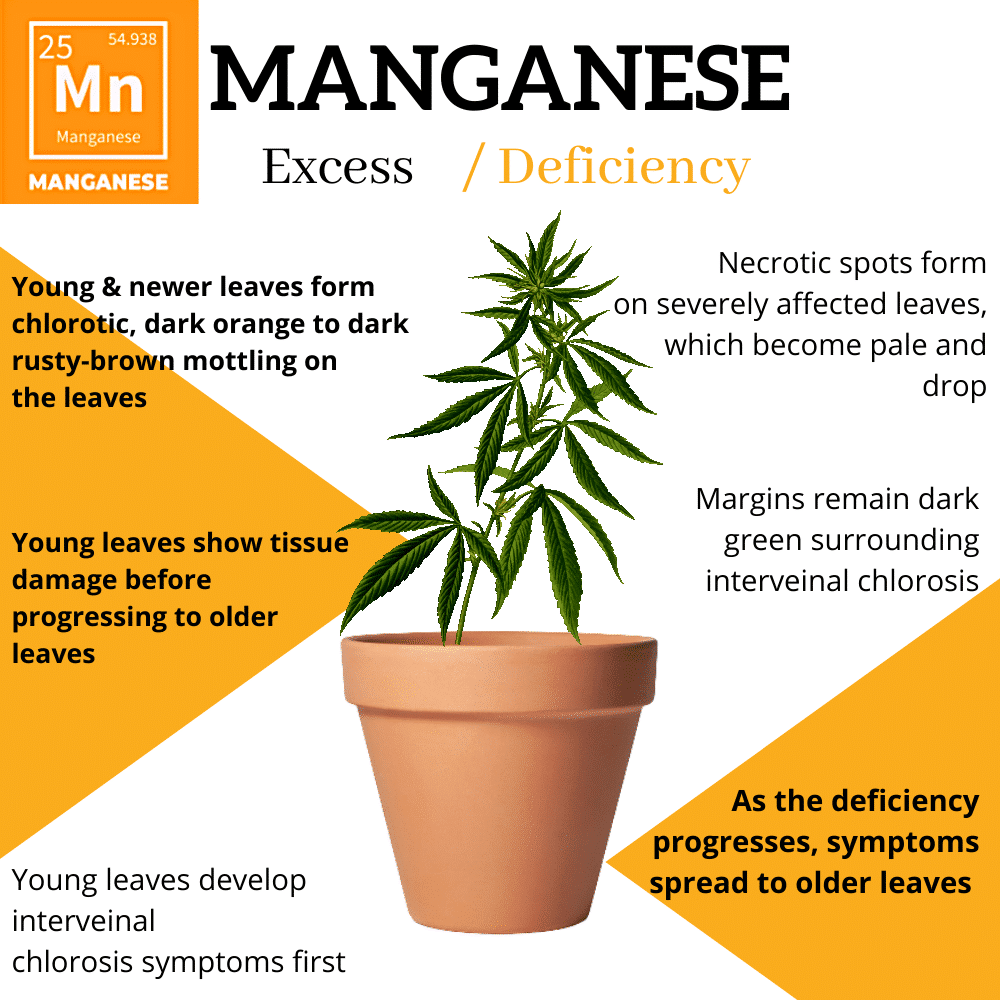
Symptoms
A Manganese deficiency is spotted by the paling leaves or discoloration that will affect new growth first. You may also notice brown spots on the leaves if the problem persists for an extended period.
Treatment
To treat a Manganese deficiency, flush your containers and prune away affected growth.
Prevention
Prevent this deficiency by monitoring the pH of your soil, as a pH imbalance is usually to blame for a Manganese deficiency.
Sulfur deficiency in cannabis
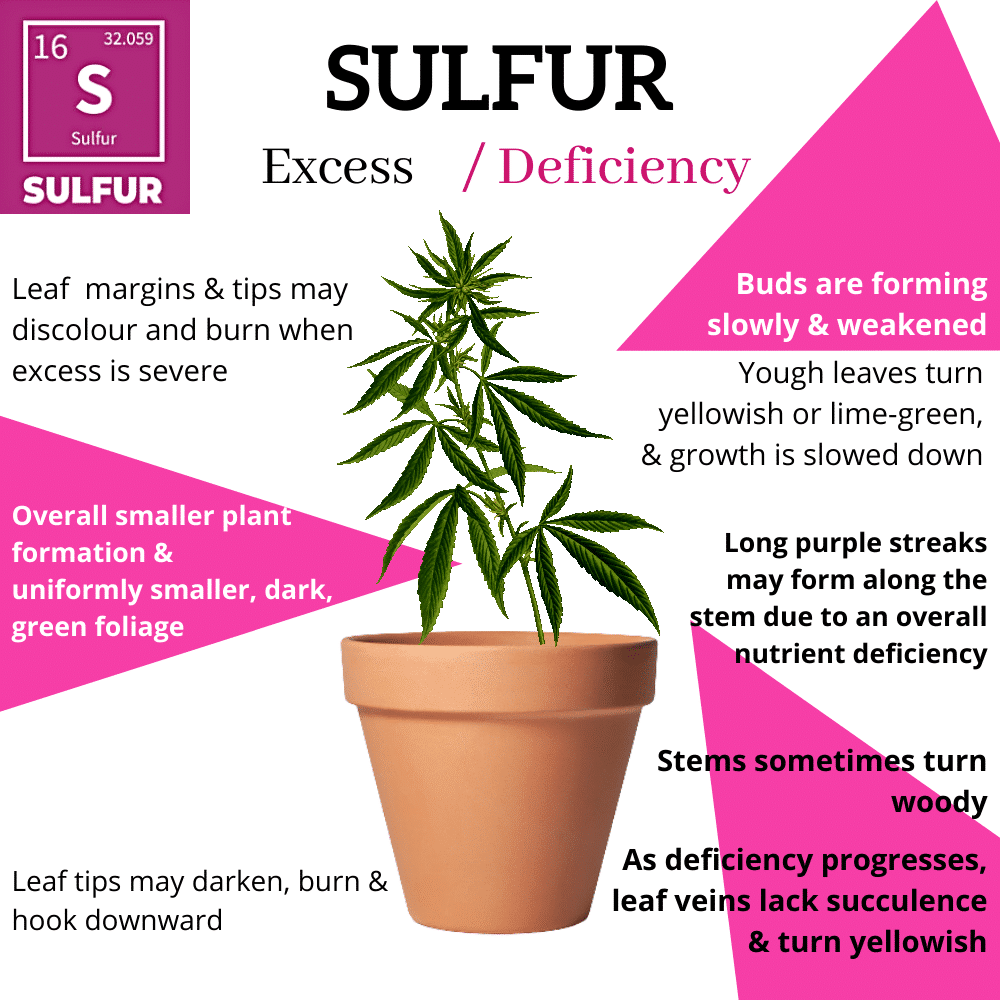
Like Manganese, Sulphur is an immobile micronutrient that helps the cannabis plant form vital proteins and enzymes.
Symptoms
Sulfur deficiencies are pretty uncommon, but you’ll notice your young leaves turn first a lime green and then a light yellow if you do have one. It is also possible to see stunted growth of new leaves or leaves that dry and brittle to the touch.
Treatment
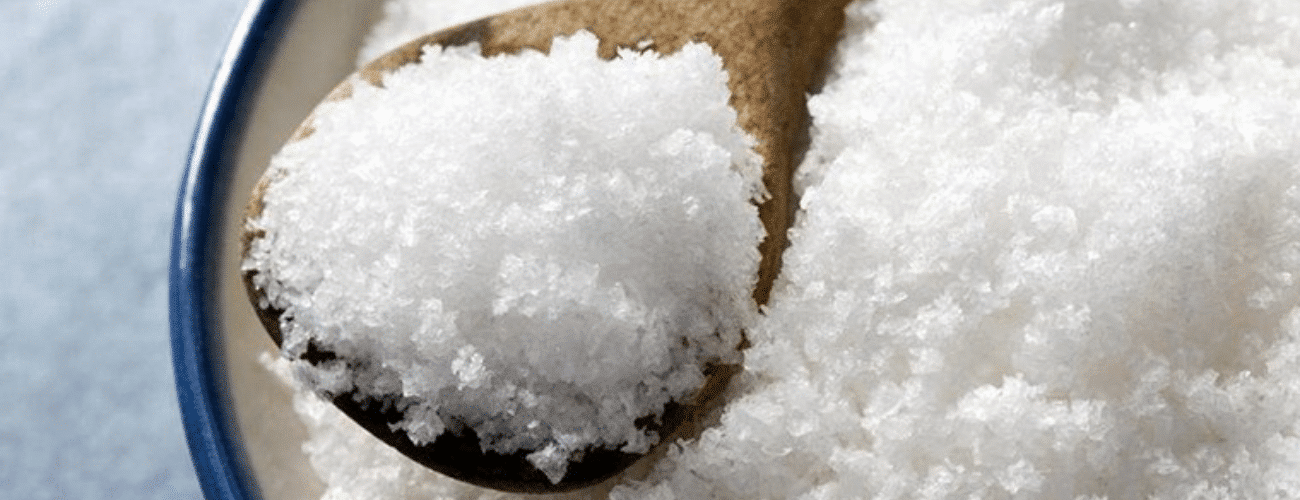
Treat this deficiency by adding 1 to 2 teaspoons of Epsom salts to four liters of water and treat the plant with the solution until the symptoms resolve themselves.
Prevention
You can prevent a Sulphur deficiency by adding manure to your compost pile or adding mycorrhizae to your pots.
Zinc deficiency in cannabis
The last immobile micronutrient of note is Zinc, which is essential to keeping plants healthy and fighting off illnesses (just like in humans!). Additionally, Zinc helps regulate the function of enzymes throughout the plant and helps stabilize DNA and RNA.
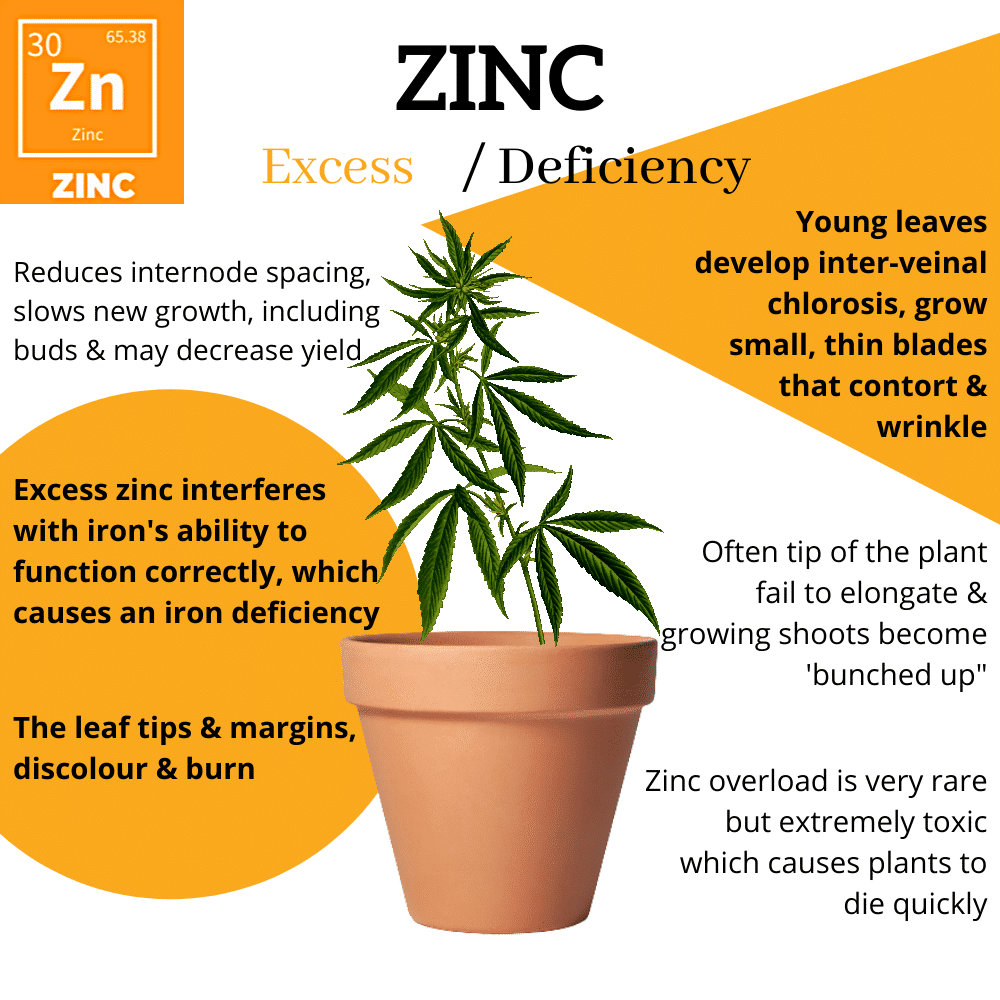
Symptoms
This deficiency commonly presents as lightning discoloration between the veins of the leaves, creating a stripe effect. You also may notice brown burns at the tips of leaves. However, it should be noted that this deficiency is not very common.
Treatment
Make sure the pH of the soil is in the ideal range, and then use a fish or seaweed foliar spray to help raise Zinc levels quickly.
Prevention
You can add pumpkin or other squash scraps to your compost to increase Zinc levels and monitor and maintain proper pH levels of your soil.

How to keep your cannabis plants healthy?
Keeping your plants healthy is essential for maximizing their yield and ensuring that they stick around for a long time. Plants have a given set of nutrients that they need to grow and function properly, and without these nutrients, you’ll quickly begin to notice the adverse effects. You can think of these nutrients as the different parts of a car engine— the car might still run without one of the parts, but you probably won’t get very far at all.
These nutrients are crucial to helping your cannabis plant perform the physiological functions required to produce the yields you need. Unfortunately, a deficiency in even one of these nutrients can significantly impact your yield and production.
If you notice that your plants are starting to look a little worse for the wear, don’t panic. These things happen, and now that you know all about nutrient deficiencies, you’ll be able to step in and save the day. Keep in mind that in many cases, the culprit responsible will be an imbalanced soil pH. Although it seems extreme, when the soil pH isn’t in the correct range, the roots cannot absorb the nutrients they need. Even if the soil is rich in every crucial nutrient, nothing will change until the pH levels are adjusted.
When attempting to diagnose a nutrient deficiency in your cannabis plant, look very closely at all symptoms to identify the correct one. Given that nutrient excess is possible, you don’t want to accidentally give your plant too much of one nutrient rather than solving the deficiency of another nutrient.
It would help if you also kept in mind that a nutrient deficiency may not be the issue at all in some cases. Cannabis plants are sensitive to many things, and nutrient deficiencies are just a few. Make sure you’re paying close attention to how much you’re watering your plants because overwatering can cause many problems (including preventing your plant from absorbing vital nutrients). You’ll also want to make sure that the temperature of the space where you’re growing your cannabis is within an ideal range, and the same goes for the humidity. It would help if you aimed to keep the humidity of the space around 40-50% and the temperature between 68 to 77 degrees Fahrenheit.
Growing cannabis is usually quite simple, but in the beginning, it might take you a second to develop a system or method that works for you. Many new plant growers (not just cannabis growers) tend to be a bit overenthusiastic about feeding or watering their plants, which can inadvertently cause many problems to occur. Remember that these plants evolved to thrive in specific conditions, and as long as you can mimic those conditions, they should do just fine.
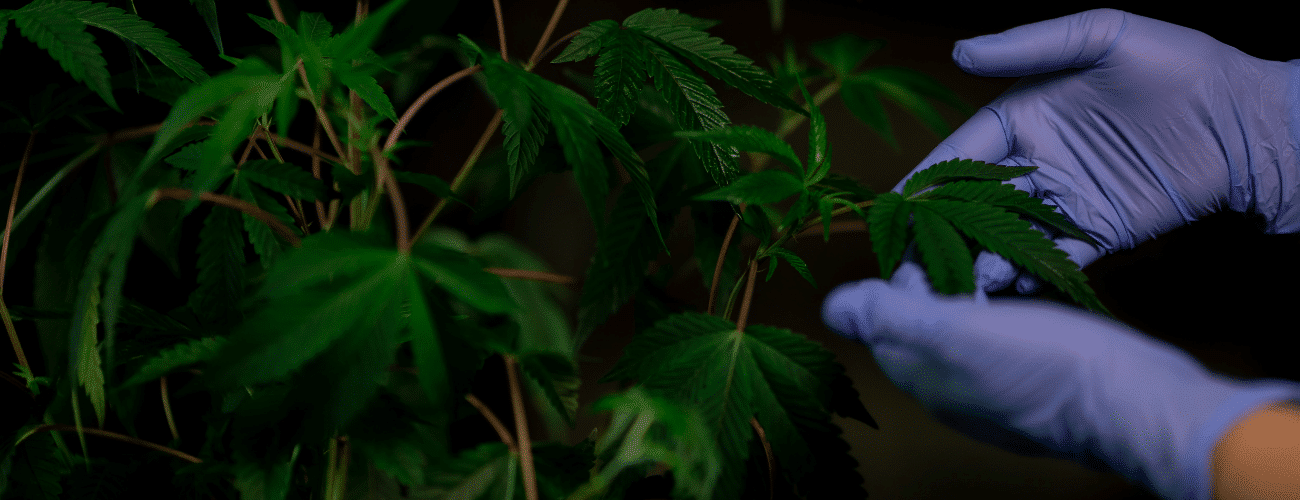
When it comes to choosing soil or growth mediums, there are a lot of manufacturers out there that specialize in creating those products specifically for cannabis plants. Depending on what you prefer, you’ll be able to find organic or synthetic methods of delivering the crucial nutrients to your plants, and neither is right or wrong. However, we recommend that you stay consistent with whatever you choose, as this can help keep your plants on track.
Cannabis Deficiencies Guide (FAQ):
What does nutrient deficiency look like in cannabis?
Examine the leaves for any signs of the disease, such as dead patches, crinkling, little brown spots, slowed development, small or twisted leaves, curled tips, and dark green around the affected areas. It’s common for plants to be deficient in calcium, magnesium, and iron all at the same time.
What does nitrogen deficiency look like in cannabis plants?
Nitrogen is not only an essential component of proteins found in plants, but it is also crucial to the proper production process of photosynthesis, particularly during the vegetative growth phase. A lack of nitrogen can cause the leaves on a plant to become yellow, curl, and end up falling off, causing the plant to have a drab appearance.
What does nutrient lockout look like?
How Does It Appear When Nutrients Are Blocked? As was previously indicated, marijuana plants will start to exhibit symptoms of malnutrition. There will be a general pallor and a stunted appearance to the plants themselves. Plants with weak leaves may also see a reduction in root development.
How long does it take cannabis to recover from nutrient deficiency?
About a week.
Nitrogen-starved plants quickly take in the nutrient once it’s made available to them. There will be an enhancement in the plant’s color to a more vibrant green. Damaged leaves can’t grow back. Typically, plant life can bounce back in a week.
Should I use nutrients every time I water?
Liquid fertilizers should be applied every other watering or every two waterings on, one-off. How complex your soil is and how well your plants are doing are also factors. Your plants can be harmed by giving them too many nutrients. Careful monitoring is required while fertilizing weed plants.

